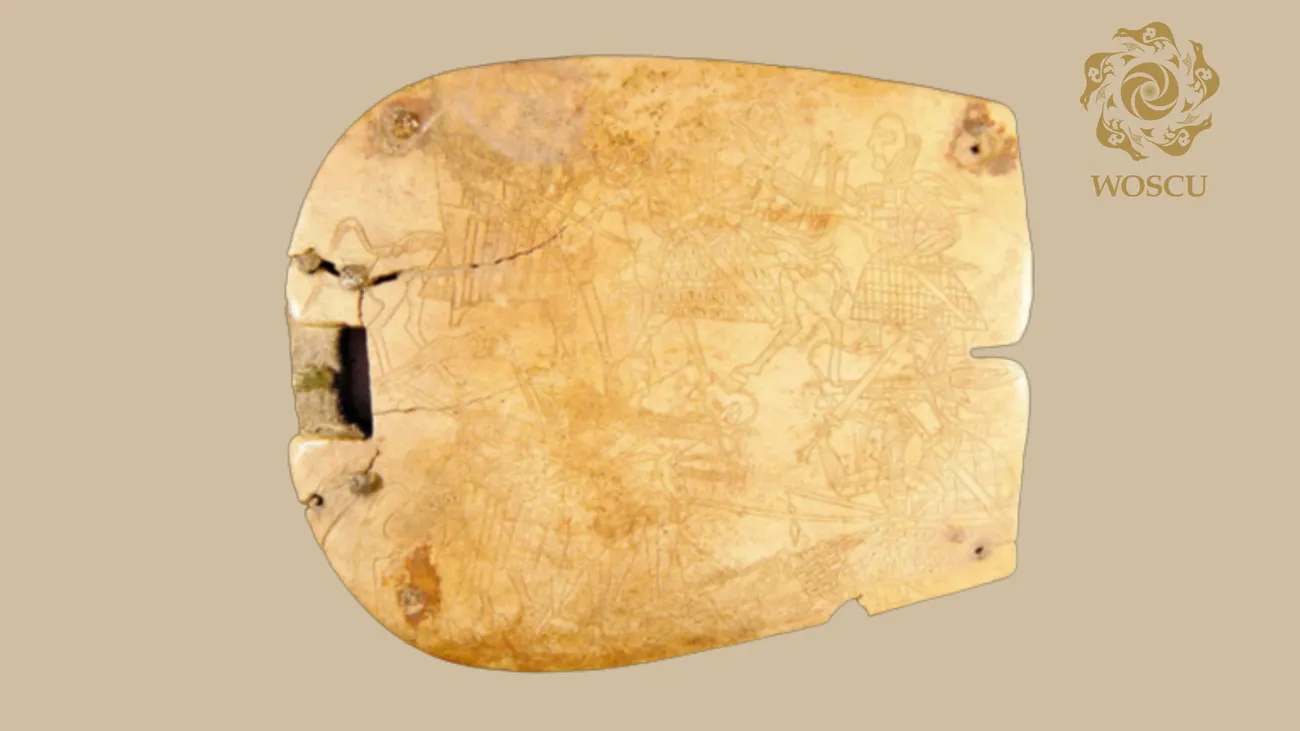The Orlat belt set, discovered in the 1970s near Samarkand in the Orlat burial mound, is one of the most unique archaeological finds connected to the history of Sogdiana. This magnificent artifact is dated to the end of the 1st century BCE – the beginning of the 1st century CE and is considered a symbol of the high status of the military aristocracy of that time.

1st-2nd centuries, Bone, engraving
The Institute of Art Studies of the Academy of Sciences of the Republik of Uzbekistan
The belt set includes bronze and silver plaques featuring the finest engravings that depict scenes of battles, hunting, and ceremonial events. A distinctive feature of the Orlat plaques lies in their artistic style: each detail is rendered with exceptional attention to the realistic portrayal of movement, emotions, and the attributes of the heroes.
Scholars believe that the images on the plaques reflect not only episodes from the everyday lives of nomadic warriors but also mythological motifs related to the heroic legends of the peoples of Central Asia. Some scenes draw clear parallels with later epic narratives such as "Alpamysh" and "The Book of Dede Korkut."
The Orlat belt stands as vivid evidence of cultural interaction: its ornamentation reveals elements of both local Sogdian traditions and the artistic influences of the Scytho-Sarmatian world. This highlights the openness of ancient Sogdiana to external cultural impulses.
Today, the Orlat plaques are a pride of the collection of the State Museum of History of Uzbekistan, and their scholarly study provides deeper insights into the social structure, military organization, and worldview of the peoples of the ancient Middle East.
WOSCU Press Service
